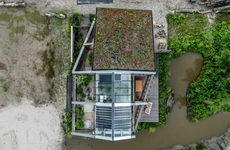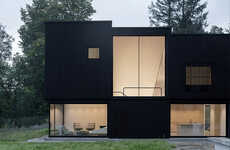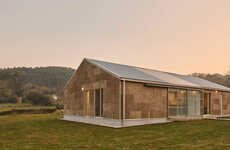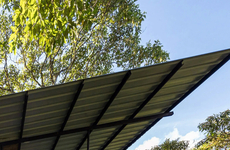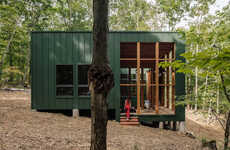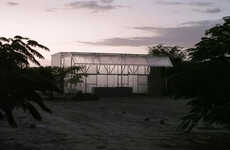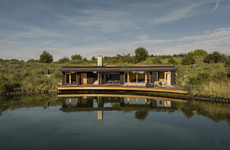
This Energy-Efficient Home Was Built Using Traditional Techniques
David Ingram — October 19, 2015 — Eco
References: luisvelascoroldan & archdaily
This green-roofed home located in Sangolqui, Ecuador was designed to leave a minimal ecological footprint.
Designed by architects Luis Roldan Velasco and Ángel Hevia Antuña, this wooden home was made using locally sourced materials, and embraces traditional Ecuadorian techniques modeled to adapt towards local climate, social and economic realities. The eco-friendly green-roofed home is energy-efficient by using pumice stone for thermal insulation. Able to be easily dismantled, the home can also be transported and made to adapt to different climates around Ecuador as the needs of the inhabitants change.
A high-strength and extremely affordable lightweight eucalyptus wood was used to build the house's frame, and a grassy roof provides additional insulation as well as a lovely decoration. There is even an actual living tree growing right through the inside of the house.
Designed by architects Luis Roldan Velasco and Ángel Hevia Antuña, this wooden home was made using locally sourced materials, and embraces traditional Ecuadorian techniques modeled to adapt towards local climate, social and economic realities. The eco-friendly green-roofed home is energy-efficient by using pumice stone for thermal insulation. Able to be easily dismantled, the home can also be transported and made to adapt to different climates around Ecuador as the needs of the inhabitants change.
A high-strength and extremely affordable lightweight eucalyptus wood was used to build the house's frame, and a grassy roof provides additional insulation as well as a lovely decoration. There is even an actual living tree growing right through the inside of the house.
Trend Themes
1. Eco-friendly Housing - The use of locally sourced materials and traditional techniques in constructing homes minimizes ecological footprint and increases energy efficiency.
2. Adaptive Housing Design - Building homes that can be easily dismantled and transported to adapt to different climates enables flexibility and cost efficiency.
3. Green Roofs - Incorporating vegetation on the roof of homes provides additional insulation and can also offer a beautiful decoration.
Industry Implications
1. Construction - Using affordable and sustainable materials in construction can create opportunities for eco-friendly housing developments.
2. Architecture - Designing homes that can be dismantled and transported, and adapting to local climate and culture, can offer innovative solutions for affordable and sustainable housing.
3. Horticulture - There is an opportunity for horticulturists to explore the use of green roofs as a more energy-efficient way of growing plants, and to develop new technologies and systems for this purpose.
6.4
Score
Popularity
Activity
Freshness

